Checking Out Prescription Glasses with DuraVision BlueProtect by ZEISS
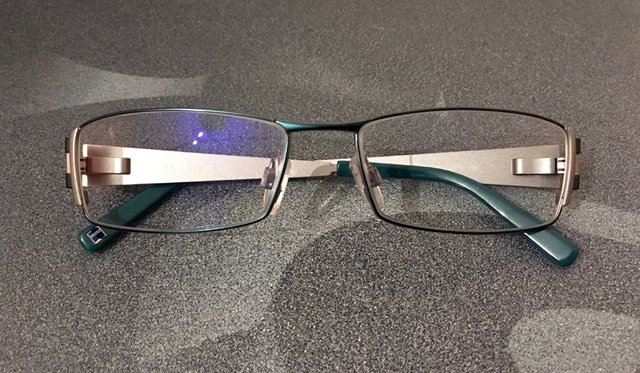
I'm continuing my series of posts about blue light and ways to reduce the negative effects that it may have in our everyday live. This time I'm going to be talking about how to block the harmful blue light for the people that are wearing prescription glasses. Recently I had to change my prescription glasses and something interesting caught my eye, namely the DuraVision BlueProtect coating by ZEISS. I'm a fan of glass (mineral) lenses and especially prefer ZEISS as a brand for lenses and that goes not only for my prescription glasses lenses. So I had to get lenses with the DV BlueProtect coating as somebody who uses a lot of digital devices that are a source of blue light in my everyday life and as a result I also did some testing...
The ZEISS DuraVision BlueProtect is a special coating for lenses for prescription glasses intended to block blue-violet light from various light sources including, but not limited to TV sets, computer displays or smartphone and tablet screens. As a side effect of that coating when wearing the glasses there is a slight visible change of colors as they become a bit warmer. Have in mind that not everyone may notice that change as it is relatively small, but unless you are working with colors in your everyday job it will not hurt in any way.
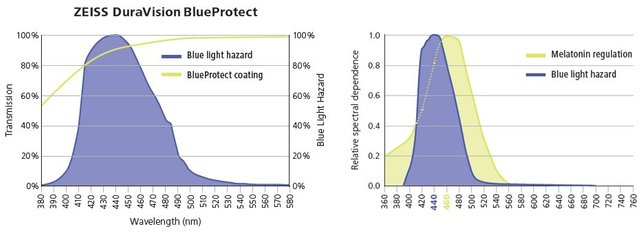
ZEISS DuraVision BlueProtect reflects parts of the blue-violet light emitted by light sources, preventing light from entering the eye. This ZEISS coating reduces the transmission in the spectrum of 380–455 nm (blue light hazard) to a BPI 15 while keeping the high transmission level above 460 nm.
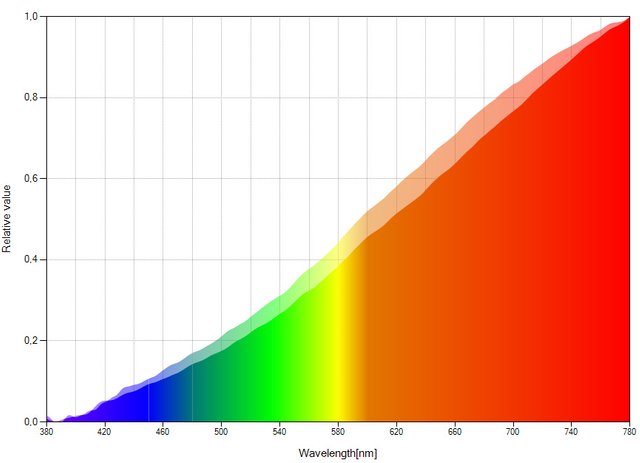
Xenon Light
Direct Flourescent Light: Color Temperature 2651K, CRI 99.2 Ra, Illuminance 106 lux
ZEISS DuraVision BlueProtect: Color Temperature 2589K, CRI 99.2 Ra, Illuminance 90.6 lux
Here is an example of how the DuraVision BlueProtect affects light coming from a Xenon light bulb, as you can see there is a significant increase in the color temperature (the warming effect of the image), no change in the Color Rendering Index and a slight drop in the illuminance level.
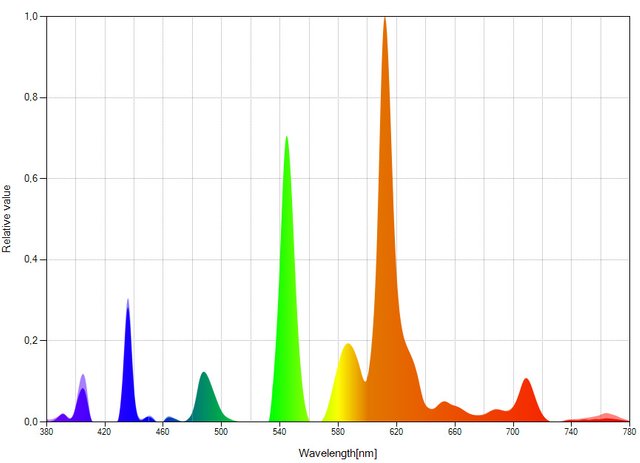
Fluorescent Light
Direct Fluorescent Light: Color Temperature 2436K, CRI 83.4 Ra, Illuminance 127 lux
ZEISS DuraVision BlueProtect: Color Temperature 2434K, CRI 83.7 Ra, Illuminance 103 lux
Moving to a fluorescent light source the change in color temperature is almost negligible, though there is some reduction in the near UV and Blue light levels as well as some in the near IR (infrared) wavelength. Interestingly enough here the coating also helps in improving a bit the perceived light by increasing the color rendering index. Again there is some drop in the illuminance level.
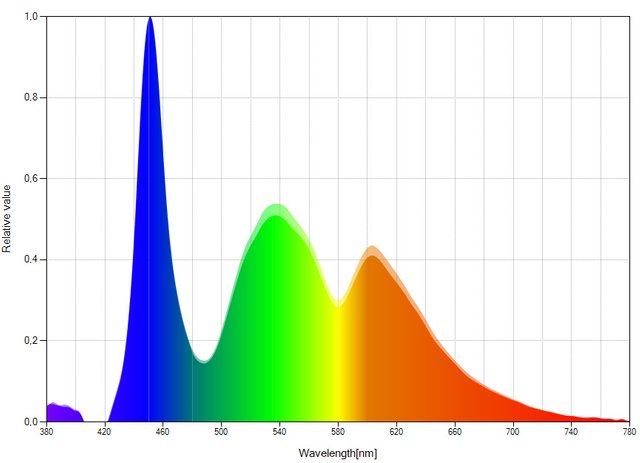
iPhone SE Screen
Direct iPhone SE Screen: Color Temperature 6787K, CRI 86.1 Ra, Illuminance 119 lux
ZEISS DuraVision BlueProtect: Color Temperature 6543K, CRI 85.7 Ra, Illuminance 130 lux
Moving on to the light coming from the display of an iPhone SE with a white image and maximum brightness level, here things are a bit more interesting than with artificial light sources like the Xenon and Fluorescent lights above. The image is warming up significantly more, there is a little drop in the CRI, but interestingly enough instead of reducing the illuminance level it is actually increased (not an error, repeated the measurement multiple times).
If you are wondering why this is happening, well instead of reducing the blue component of the white light as in the above two cases here it seems that the filter is actually helping increase the green and red components of the light. This is also the reason why the change in color temperature is with more than 200 degrees Kelvin to the warmer side.
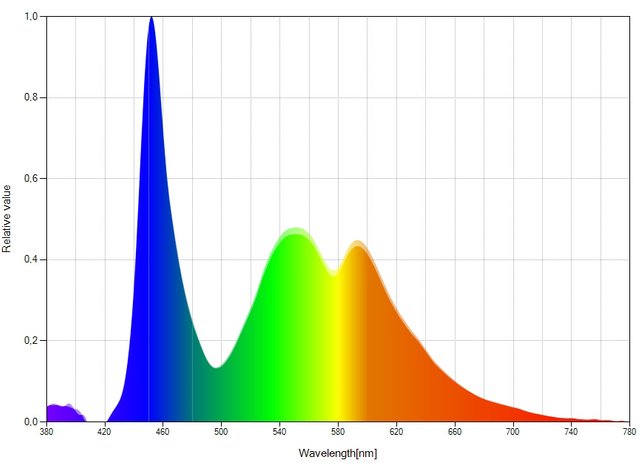
Laptop's Screen
Laptop's Screen: Color Temperature 6553K, CRI 78.1 Ra, Illuminance 171 lux
ZEISS DuraVision BlueProtect: Color Temperature 6369K, CRI 77.6 Ra, Illuminance 168 lux
Repeating the test with the display of a laptop shows very similar results to the test performed with the screen of the smartphone, though at a bit lower level. The warming up of the colors is still pretty high, there is a similar drop in the CRI value and a slight drop in the illuminance level. Again instead of a reduction in the blue color component the negative effect of blue light is being countered by increasing the green and red components of the white light.
What is the Conclusion
The ZEISS DuraVision BlueProtect does seem to really work well and do its job. It seems to work better on digital devices that rely on a LED backlight and we use plenty of these on our everyday life - TV sets, computers, smartphones, tablets... now LEDs are also finding their way in out artificial light setups as well. The UV and Blue light filtering also works well with other light types, but not as much as with LED light sources apparently. So you can also count on this coating technology to help you get a better sleep at night and reduce other potential harmful effects that it might also have on your health. This is especially true for people that work with computers on a daily basis and that also spend some of their nights in front of a computer, tablet or their smartphone before going to bed. Do not forget to check out my other posts that cover different functions and software solutions that may actually help in reducing the blue light emitted from the devices themselves that I have been positing on Steemit for a while already...
If you have a question or want to add something, then please leave a comment below.
Did you like what you have just read? Check my other posts on steemit @cryptos
If you like what I'm doing for Steem and on Steemit you can support me as a Witness
That's interesting, I am wondering however about the price... :)
ZEISS offers a number of lenses with the DuraVision BlueProtect, so price wise it in the midrange. There are much more expensive lenses available and there are other factors that may affect the price of the lens. What I think however is that your eyes are not something that you should do compromises with.
Totally true. Funnily enough, my eyes are stable since I started to heavily work on computers.
Thanks for the information and post. I definitely need to read more about this in your other posts. So amazing how things affect us on a daily basis that we don't even realize, or think about.
bit of a vague comment / question, but I wonder whether / how the generic "computer anti-glare" coating on my prescription glasses might relate or compare if at all... ?
On another tangent, my gf likes cool/blue lighting and I am forever trying to switch to warmer spectrum bulbs, but may need to get myself a little Zeiss action here!